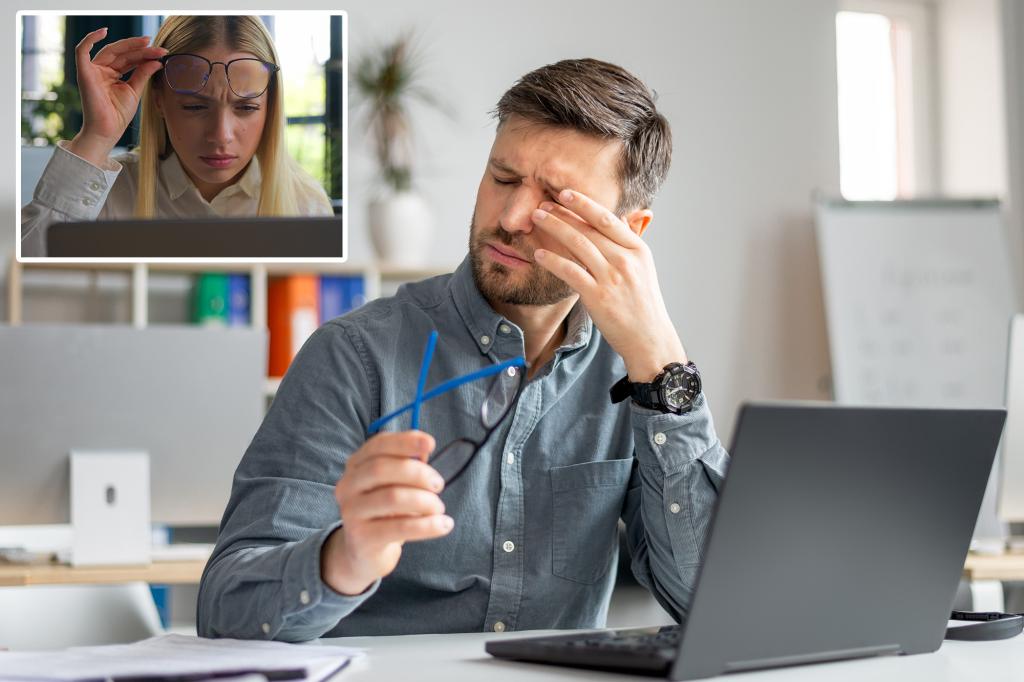Effective Exercise to Relieve Screen-Related Eye Strain Fast
Quick Exercises to Alleviate Eye Strain from Screens
In today’s tech-driven world, we’re glued to our screens like a kid to candy. Whether we’re binge-watching our favorite shows, scrolling through social media, or staring at spreadsheets all day, our eyes are doing some serious heavy lifting. And just like that kid stuffed with sugar at a birthday party, our eyes can get dulled and strained. So, how do we give them a breather? In this article, we’ll dive into effective exercises to relieve screen-related eye strain quickly and help you reclaim your visual wellness.
Understanding Eye Strain
Before we jump into exercises, let’s take a moment to understand what we’re dealing with. Eye strain, often referred to as digital eye strain or computer vision syndrome, can pop up when our eyes get overworked. Symptoms can include:
- Dry Eyes: You might feel like your eyes are as parched as a desert.
- Blurred Vision: Everything starts to look like a fuzzy snooze fest.
- Headaches: Your head starts pounding like it’s hosting a rock concert.
- Difficulty Focusing: It’s hard to zero in, making reading more of a chore.
- Neck and Shoulder Pain: These muscles might scream “help!” from all the hunching over your screen.
What Causes Eye Strain?
So, what’s causing this eye fatigue? A few primary culprits include:
- Blue Light Exposure: Prolonged screen time exposes your eyes to blue light, which can interfere with your sleep cycle and lead to discomfort.
- Poor Posture: Hunching over your devices can put a strain on your neck and eyes.
- Infrequent Blinking: While focused, many of us forget to blink, leading to dry and tired eyes.
Being aware of these factors can help you mitigate your risk and understand the “why” behind these annoying symptoms.
Quick Exercises to Relieve Eye Strain
Now that we’ve set the stage, let’s jump into some quick and effective exercises that are sure to help alleviate your eye strain. Think of these exercises as mini workouts for your peepers!
1. The 20-20-20 Rule
This exercise is as simple as it sounds, and it’s a game-changer.
- What to Do: Every 20 minutes, take a 20-second break and focus on something at least 20 feet away.
- Why It Works: This technique gives your eyes a chance to reset, reduces fatigue and encourages blinking, which moisturizes your eyes.
2. Eye Rolls
Eye rolls aren’t just for drama queens! They can actually relieve tension.
- What to Do: Close your eyes and roll them slowly in a circular motion, both clockwise and then counterclockwise. Do this for about 10 seconds in each direction.
- Why It Works: This movement increases blood circulation and relaxes your eye muscles.
3. Shifting Focus
This is just like changing gears in a car—sometimes you need to switch things up!
- What to Do: Hold your finger or a pen around 6 inches from your face. Focus on it for a few seconds, then shift your gaze to something farther away (play the 20-20-20 rule here).
- Why It Works: Switching focus helps strengthen your eye muscles and reduces strain.
4. Palming
Give your eyes a little spa moment with this technique!
- What to Do: Rub your palms together to generate heat, then gently cup them over your closed eyes without applying pressure. Hold for about 30 seconds.
- Why It Works: This soothes tired eyes and blocks out light, allowing your eye muscles to relax.
5. The Blink Break
Are you a chronic non-blinker? It’s time to change that!
- What to Do: Set a timer for every 5 minutes, and consciously blink 10 times, slowly and deliberately.
- Why It Works: Blinking keeps your eyes moist and refreshes your focus.
6. Distance Gazing
When was the last time you gazed into the distance? Feed that eye muscle!
- What to Do: Find a window or open space. Gaze into the distance, trying to keep your eyes focused on something far away for about a minute.
- Why It Works: This gives your eyes a break from the close-up strain and relaxes them.
7. Neck and Shoulder Stretch
Remember, your eyes are connected to your body.
- What to Do: Sit up straight, and gently tilt your head from side to side and forwards and backwards. Hold each stretch for about 10 seconds.
- Why It Works: Relieves tension in your neck and shoulders, which can often contribute to eye strain.
Daily Habits for Preventing Eye Strain
While these exercises are fantastic for a quick fix, integrating daily habits can help you maintain eye health. Here are some suggestions:
- Adjust Your Lighting: Avoid glare by ensuring your work area is well-lit, but not too bright.
- Take Regular Breaks: Stepping away from your screen every hour can do wonders.
- Proper Screen Positioning: Keep your screen an arm’s length away and slightly below eye level to minimize strain.
- Wear the Right Glasses: If you need prescription glasses, consider anti-reflective coatings to cut down on glare.
Where to Start
Feeling intrigued? Why not try these exercises right now? Take a minute, close your computer, and give your eyes the break they deserve!
Conclusion
There you have it—effective exercises to relieve screen-related eye strain fast! Your eyes are precious, so treating them with care and employing these simple techniques can make a profound difference. Remember, just like you wouldn’t run a marathon without warming up, your eyes need care and attention too.
Don’t let eye strain cloud your vision. Incorporating these quick exercises into your daily routine can help give your eyes the relief they desperately need, keeping you feeling fresh and focused.
FAQs
1. How often should I do these eye exercises?
Try to incorporate eye exercises every 20 minutes during screen time or whenever you feel strain.
2. Is blue light truly harmful to my eyes?
While blue light can contribute to fatigue and disrupt sleep patterns, the long-term damage is still being studied. Moderation and protection are key.
3. Do the 20-20-20 rule and other exercises work immediately?
Many people experience relief right after these exercises, but consistent practice yields the best results.
4. Are there any apps to help remind me to take breaks?
Absolutely! There are several apps designed to remind you to take breaks, such as Eye Care 20 20 20 or f.lux.
5. What are some signs I need to see an eye doctor?
If your eye strain continues even after adjusting your screen time habits, or if you experience severe headaches, blurry vision, or discomfort, schedule an appointment with your eye doctor.







